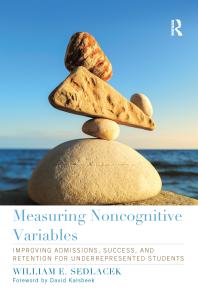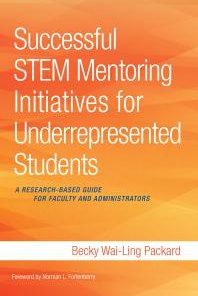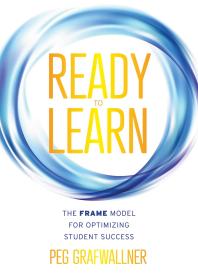Measuring Noncognitive Variables Improving Admissions Success and Retention for Underrepresented Students 1st Edition by William Sedlacek, David Kalsbeek ISBN 9781620362570 1620362570
$50.00 Original price was: $50.00.$25.00Current price is: $25.00.
Measuring Noncognitive Variables Improving Admissions Success and Retention for Underrepresented Students 1st Edition by William Sedlacek, David Kalsbeek – Ebook PDF Instant Download/Delivery: 9781620362570 ,1620362570
Full download Measuring Noncognitive Variables Improving Admissions Success and Retention for Underrepresented Students 1st Edition after payment

Product details:
ISBN 10: 1620362570
ISBN 13: 9781620362570
Author: William Sedlacek, David Kalsbeek
Measuring Noncognitive Variables Improving Admissions Success and Retention for Underrepresented Students 1st Edition Table of contents:
A Guide for Academic and Higher Education Professionals
1. The Innovation Process
Five-Stage Proactive Innovation Model
Stage 1: Recognition of a Specific Problem
Stage 2: Invention of a Creative Solution or Novel Idea That Helps Address a Problem or Seize an Opportunity
Stage 3: Development of an Innovation by Creating Practical, Actionable Plans and Guidelines
Stage 4: Implementation of an Innovation to Produce Real Examples of Changed Practice, Testing the Innovation to See How It Compares to Existing Solutions
Stage 5: Diffusion of Successful Innovations: Taking Them to Scale and Leading to Wider Adoption Outside the Original Setting
Adopting the Innovation
Characteristic 1: Relative Advantage: How Is the Innovation Better Than That Currently Employed?
Characteristic 2: Compatibility: Does the Innovation Fit With the Procedures and Style Currently Used?
Characteristic 3: Simplicity or Complexity: Is the Innovation Easy or Difficult to Use?
Characteristic 4: Trialability: Can the Innovation Be Empirically Tested?
Characteristic 5: Observability: Are the Results of the Innovation Visible to All?
2. Traditional Admissions Measures
Attributes That Determine Students’ Success in Higher Education
Courses
Grades
Interviews
Letters of Recommendation
Portfolio Assessments
Essays
Application Reviews
Tests
Aptitude Tests Versus Achievement Tests: The Curious Case of the Indestructible Straw Person
The GRE
Why Use Tests at All?
Test-Optional Programs
Keeping Up With Change
3. Noncognitive Measures
Legal Issues and Noncognitive Variables
Measuring Noncognitive Variables
The Noncognitive Questionnaire
Summary of NCQ Methodology
Criticisms of Noncognitive Variable Assessment Methodology
4. Self-Concept and Realistic Self-Appraisal
Self-Concept
Realistic Self-Appraisal
5. Understands and Knows How to Navigate the System and Racism
What Is Racism?
Racism and Terminology
Let’s Avoid the Topic: The N-Word
Additional Examples of Racism in Education
Models for Handling Racism
Sedlacek–Brooks Model
Helms Model
Racism and Men of Color: Facing the System
African American Men
Latinos: Other Forms of Racism
Asian/Pacific Islander American Men
Native American Men
I Am Not a Man of Color; Why Should I Care?
Christian Privilege
The Role of Faculty and Staff in Handling Racist Incidents
Women and Sexism
Women of Color and Sexism
Sexist Messages and Behaviors in Higher Education
6. Long-Term Goals, Strong Support Person, Leadership, Community, and Nontraditional Learning
Long-Term Goals
Strong Support Person
Leadership
Community
Nontraditional Learning
7. Additional Measures of Diversity
Diversity Research
Situational Attitude Scale
Creating SAS Situations
Constructing Multiple SAS Forms
Summary of SAS Methodology
Cultural Attitudes and Climate Survey
Conducting a Campus Climate Assessment
How Results Will Be Used
Collaborations and Realism: Keys to Success
Dissemination and Follow-Up
Universal Diverse Orientation
Perceptual Mapping
Methodological Advantages of Perceptual Mapping
Thurstone Equal-Appearing Intervals
Advantages and Disadvantages of Equal-Appearing Intervals
8. The Waves of Change Find Many Shores
Professional Groups
American Association of Collegiate Registrars and Admissions Officers
Association of American Medical Colleges
Colleges and Universities With Religious Affiliations
Brigham Young University
Madonna University
Goshen College
DePaul University
University of St. Thomas
Johnson C. Smith University
Secondary School Programs
Secondary School Admission Test Board
Phillips Exeter Academy
Inver Hills Community College
YES Prep Public Schools
Douglas County Performance Learning Center
Thomas Jefferson High School for Science and Technology
Big Picture Learning
Los Angeles BPL High School
LaFayette BPL
Chegg
Eagle Rock School and Development Center
Fight Your Math Phobia Course
Foundations
Washington State Achievers
Bill & Melinda Gates Foundation
Jack Kent Cooke Foundation
Colleges and Universities
Southern Illinois University
University of Texas Rio Grande Valley
Washington State University Vancouver
Oregon State University
Texas A&M University
University of North Carolina Conference
North Carolina State University
University of Puget Sound
Montgomery College
Central New Mexico Community College
Professional Schools
University of Maryland School of Medicine
University of Sri Jayewardenepura, Sri Lanka
Fiji School of Medicine
North Carolina State University–Tuskegee University
East Carolina University School of Dental Medicine
Additional Organizations and Programs Using Noncognitive Variables
U.S. Dream Academy
9. The Future
Exhibit 1 Description of Noncognitive Variables With Reliability Estimates of Scale Scores
Appendix A1 Scoring System for Noncognitive Variables on Interviews and Essays
Appendix A2 Example Cases for Training Raters in Evaluating Admissions or Financial Aid Applications
Noncognitive Variable Scoring System
Appendix B1 Noncognitive Items That Can Be Employed in Interview, Short-Answer, Essay, or Application Review Formats
Noncognitive Variable Scoring System
Variable 1: Positive Self-Concept
Variable 2: Realistic Self-Appraisal
Variable 3: Understands and Knows how to Navigate the System and Racism
Variable 4: Prefers Long-Range Goals to Short-Term or Immediate Needs
Variable 5: Availability of Strong Support Person
Variable 6: Successful Leadership Experience
Variable 7: Demonstrated Community Service
Variable 8: Knowledge Acquired in or About a Field (Nontraditional Learning)
Appendix B2 Noncognitive Items in Likert (Agree–Disagree) Formats
Variable 1: Positive Self-Concept
Variable 2: Realistic Self-Appraisal
Variable 3: Understands and Knows how to Navigate the System and Racism
Variable 4: Prefers Long-Range Goals to Short-Term or Immediate Needs
Variable 5: Availability of Strong Support Person
Variable 6: Successful Leadership Experience
Variable 7: Demonstrated Community Service
Variable 8: Knowledge Acquired in or about a Field (Nontraditional Learning)
Appendix B3 Noncognitive Items in Multiple-Choice Formats
Multiple-Choice Items
Variable 1: Positive Self-Concept
Variable 2: Realistic Self-Appraisal
Variable 3: Understands and Knows How to Navigate the System and Racism
Variable 4: Prefers Long-Range Goals to Short-Term or Immediate Needs
Variable 5: Person
Variable 6:
Variable 7: Demonstrated Community Service
Variable 8: Knowledge Acquired in or About a Field (Nontraditional Learning)
Appendix C: Universal Diverse Orientation (UDO) Scale–Short Form
Appendix D: Example Behaviors for Evaluating University Police Officers
Appendix E: Principles of Interviewing for Noncognitive Variable Diagnosis
References
Index
People also search for Measuring Noncognitive Variables Improving Admissions Success and Retention for Underrepresented Students 1st Edition:
non cognitive variables
non cognitive variables in predicting academic success
measuring non cognitive variables
measuring and narrowing the compositionality gap in language models
noncognitive variables
Tags: William Sedlacek, David Kalsbeek, Noncognitive Variables, Admissions Success, Underrepresented Students
You may also like…
Politics & Philosophy - Sociology
Education Studies & Teaching - Special Education
Education Studies & Teaching - Higher & Further Education
Uncategorized
Uncategorized
Business & Economics - Econometrics
Uncategorized
Uncategorized











